

Your mag
Recognized in Spring 2012, YOURMAG ’s goal is to promote knowledge of the magazine industry by giving students the opportunity to be responsible for all aspects of a monthly lifestyle publication. With an audience of urban college students in mind, members create content across a broad range of topics and mediums, including style, romance, music, pop culture, personal identity, and experiences. YourMag’s overarching aim is to foster a positive, inclusive community of writers, editors, and artists.

volume 22 | issue 2 | November 2024
HAILEY KROLL
Managing Editor
ALEKS CARNEY
Creative Director
Siena Yocum
Asst. Creative Director
REBECCA CALVAR
Art Director
JULIA MAGDZIAK Co-Head Stylist
ANNA BACAL PETERSON Co-Head Stylist
SEBASTIAN OLIVO YMTV Director
PALOMA CASTRILLO
Asst. YMTV Director
SASHA GAYKO
Asst. YMTV Director
GRIFFIN WILLNER Editor-in-Chief
MOLLY DEHAVEN Co-Head Designer
LAUREN MALLETT Co-Head Designer
ISABELLE GALGANO Editorial Director
Sofia Misisco Asst. Editorial Director
Emilie Dumas Photo Director
ISABELLA CASTELO Living Editor
Lucy Latorre Co-Web Editor
GRAY GAILEY Co-Web Editor
SYDNEY SWANN Diversity Chair
SOPHIE HARTSTEIN Copy Chief
IZZIE CLAUDIO Head Proofreader
VARA GIANNAKOPOULOS Romance Editor
ELLA MORDARSKI Style Editor
VIVIAN NGUYEN Social Media Director
COLETTE ROGERS Asst. Social Media Director
LEO LUKASZEVICZ Marketing Manager
NATHAN KAHN Asst. Marketing Manager
Copy editors: Madison Lucchesi, Kai Etringer, Lauren Mallett
GRAPHIC designERS: Briana Cordon, Audrey COleman, Isabella Chiu, Hailey Kroll
Proofreaders: Hailey Kroll, Isaiah Flynn, Madison Lucchesi, Sophie Hartstein
Cat and Mouse
You Can’t Fix Him: Avoiding Mothering Relationships
On Being Single When Everything Smells Like Cinnamon Time Slips Away
The Fragrantica Fiends
Too Pretty For a Job, or Too Pretty For That Shirt?
A Quest For Androgynous Style your closet Melted Wings
Breaking Out of the Box Bananas, Bananas, Bananas
You Can be Anything... Just Not President Behind Closed Doors
Why Am I Drawn to Drama-Filled Reality Television?
The Art of the King Adaptation
me, myself, and my kindle Kaleidoscope

LettersfromtheEditors
As the clocks turn from October to November, we traverse through another era and take a snapshot of the clock. In a glimpse of time between midterms and finals, sometimes it feels as though we are trapped in the business of our day to day. In these moments, it can be beneficial to stop the clock as we soak in the fall breeze. This month was a bit of a challenge for me. My mental health was plummeting quite a bit. I felt the political state of our country crushing me from all directions, and it seemed like I had no control over the world around me. All I wanted was for time to stop so that I could catch my breath–––and that’s exactly what I did! I gave myself time for grief, for sleep, and for time to re-sow my seams. When I finally found my way out of my pit of melancholy, I was ready to put myself back to work. In this way, it is necessary to take time and to hold it closely. To play with one’s own internal clock is to change how time is perceived around them. And though it felt like November was going to last an eternity then, it is as if time’s arrow has finally marched forward. Best wishes, and remember that finals will be over in an instant!
Love in perpetuity, Griffin Willner
With the end of the month rapidly approaching, I find myself reflecting on the chaos it has been. November brought ample space for introspection, leaving me caught between nostalgia for what’s behind us and excitement for what lies ahead. I can confidently say that this month didn’t go as planned for a lot of us. With the weight of election results hanging over us, a cascade of projects, and the frenzy between midterms and finals seasons, it feels as though time has been zooming by. Putting this issue together was a bit more challenging given the reduced bandwidth of our community, but we succeeded—because we always do! A genuine thank you to everyone who poured their time, energy, and creativity into this production cycle. Your dedication and passion shine through every page, and we couldn’t have done it without you. I am proud to share the fruits of your creativity with our readers.
With love and gratitude, Hailey Kroll
This November, YourMagazine steps into the garden of time to experience the ethereal glow of a rustic autumn. In this issue, our writers explore a wide variety of themes and topics. Our romance writers celebrate the holidays and study power dynamics by playing a game of cat and mouse. In the style section, authors try on androgynous clothing and spritzed scents of cinnamon across their bodies. As the clock continues to tick, our living writers close their eyes and shout “BANANAS” while investigating their own identities and dreams. Finally, our arts and entertainment section turns the page on a previous chapter and looks at the cinematic adaptations of Stephen King as well as the ever changing dynamics of reality television. Playing with hues of golds, oranges, and greens, the editorials in this issue delve into the passing of time. Attempting not to fly too close to the sun, “Melted Wings” retells the story of Icarus, revealing the overlap of myth and reality. Continuing, “Time Slips Away” confronts the feelings that arise when growing up—each moment slipping through our fingers, transforming into memories. Lastly, “Behind Closed Doors” delves into the versions of ourselves that emerge in isolation. We wrap up this issue with an Artist Statement, highlighting the work of writer and director Nattanan Jaraschatrkaew. With finals approaching, we hope you are able to find a peaceful sort of solitude in this issue, using it as an opportunity to escape the whirlwind of life that is the fall semester.


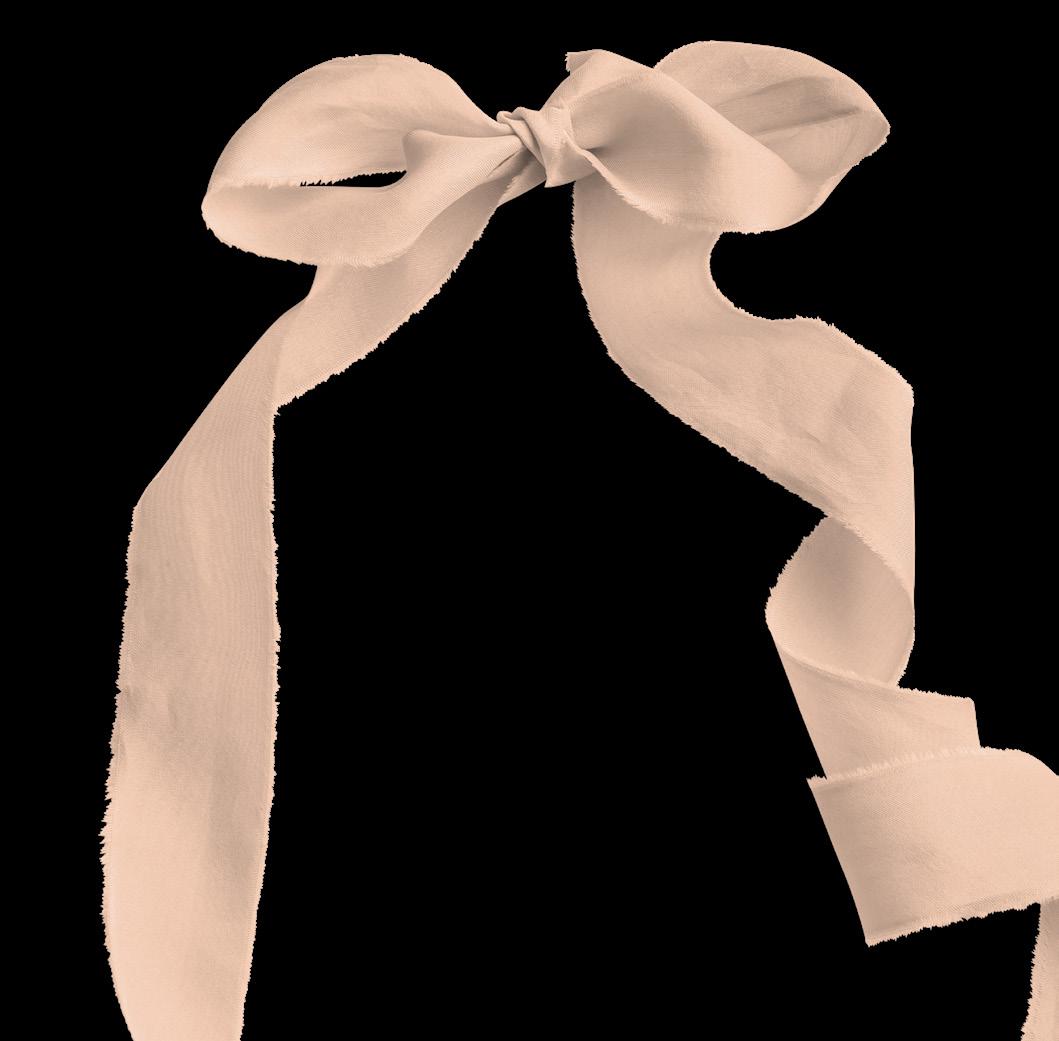
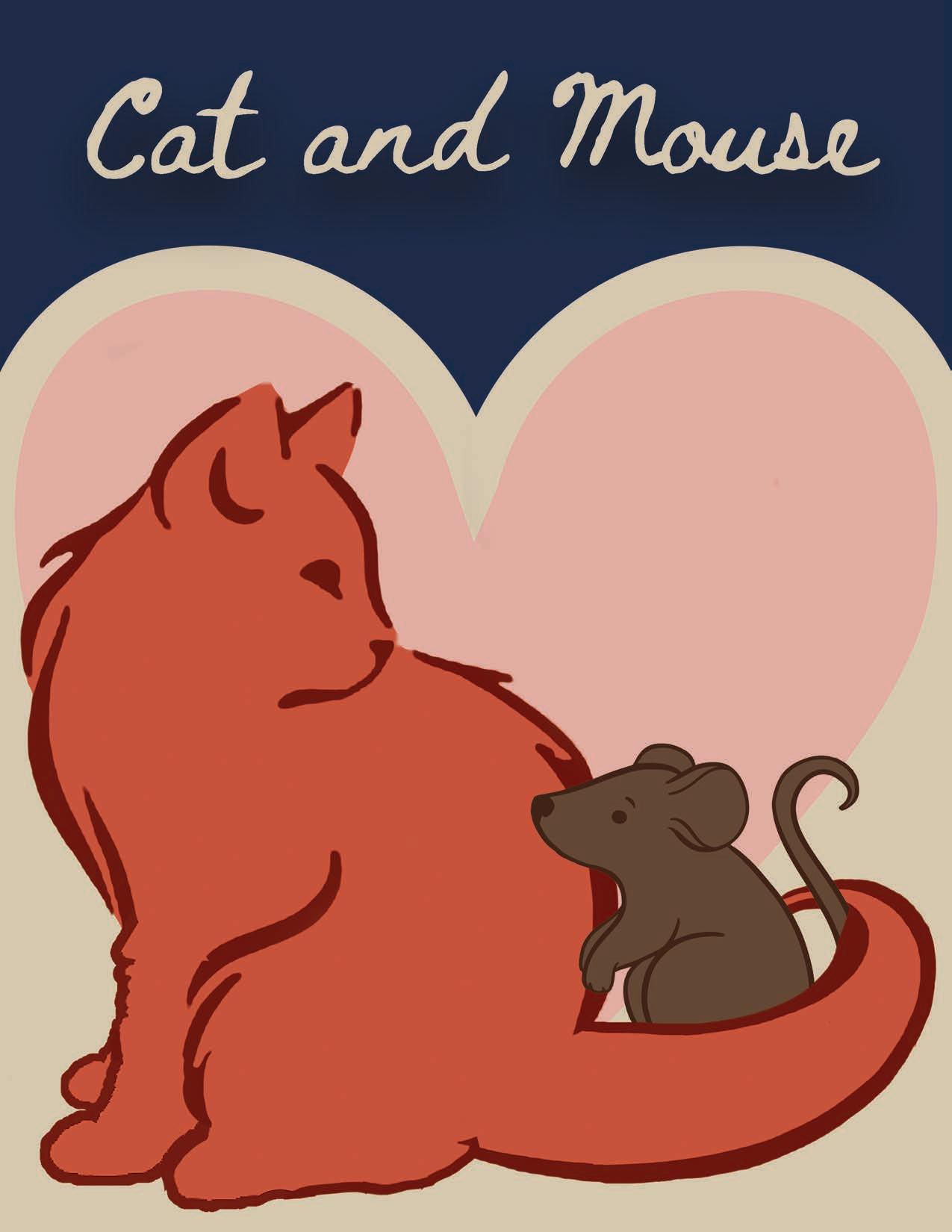

WRITTEN BY HEATHER THORN
ART BY LAUREN MALLET

Yearning, pining, longing… have you or someone you know been a victim of unrequited love? You may be entitled to emotional compensation.
Love is often played tactically by both players so that a push and pull relationship develops. This isn’t a game of gravity, though, or even a game of logic. Instead, the game of cat and mouse, often seen in these relationships, is one of pursuit. This dynamic arises from the thrill of chasing after someone that is either unattainable, or interested enough to play the game, but unwilling to completely close the distance between them. There are a number of reasons why this cycle forms:
one actually is. All of this is to increase one’s perceived attractiveness and allure while also saving face. By taunting the cat with their attention, the mouse creates a cycle of chase, near-capture, and escape that will prevail—boosting one ego while damaging the other.
Technology has made it easier than ever to play hard to get due to the multitude of platforms we all have to connect. Someone not replying to your text but being active online can very quickly become a mind game. Suddenly, social media has become a battleground in which all moves are calculated in order to receive validation from the

Chasing after someone entails constantly seeking attention from them, which in turn can become a source of validation. With it, you feel on top of the world. Without it, you may start to believe yourself unworthy of romantic interest and blame yourself.
Additionally, the push and pull can distract from the relationship or “situationship” itself. Chasing after someone becomes a source of adrenaline and anticipation—a sense of excitement easily confused for genuine interest in the other person. The rush of pursuit and the challenge of capturing someone who is hard to get becomes the focus of the love game, rather than the person themself. The idealized person then becomes increasingly desirable the longer the chase goes on.
Playing cat and mouse can present itself in a multitude of ways: waiting a certain amount of time to text back, pretending to be too busy to show them attention, or appearing to be less interested than




You Can’t Fix Him Avoiding Mothering
WRITTEN BY MADDIE BARRON
He’s the sweet, bumbling “fixer-upper.” He’s a-dork-ably funny, and he never learned how to do laundry. His ineptitude is endearing at first, until you’re months into proving Freud right and teaching a grown man how to rinse the dishes before putting them in the dishwasher. Or maybe it’s exciting to have power over a man who admits you are more capable than he will ever be.
Arwen Antaran knows firsthand that it’s impossible to “fix him.” Antaran, a 20-year-old forensics student at Clemson University, recently got out of a heterosexual relationship that felt more like babysitting than dating.
Therapy sessions, room cleanings, and sponge bathing were a few responsibilities Antaran took up while she dated Roman, 21.
“All the things that you’d expect a mom to provide for her son, I was doing,” Antaran says.
The remarkably un-sexy phenomenon of mothering boyfriends plagues the Gen Z dating pool. Enough time rotting online will find you miserably watching wives cook dinners alone or in the comment section of a girl fighting strangers over if she should break up with her boyfriend for forgetting her birthday. The flagrant disparity between what women versus men contribute in straight relationships is like the difference between a mother keeping her child alive, and the child offering sentimental crayon drawings in return.
Kaylee Reigel, a junior at the College of Charleston, ended her last long-term relationship with her high school sweetheart because the burden of responsibility became too much.
“I had to teach him how to be a man and how to communicate and respond to things,” she says.
Their relationship escalated to the point where Reigel helped him graduate high school, sitting him down at the table and helping him with his homework.
Second-wave feminism earned women more presence as professionals, dramatically shifting heterosexual dating dynamics. Feminist author Jane Ward describes in her book, The Tragedy of Heterosexuality, how post-1980s sitcoms depicted self-reliant, careerprofessional women in heterosexual relationships with bumbling, unreliable male partners. Women were deemed more competent in all matters of the family, the relationship, domestic responsibilities, and— suddenly—in the workplace.
And now, in a highly distant, online dating pool, Gen Z women desire fruitful heterosexual relationships but find their bachelors lackluster.
Expert on heterosexual relationship dynamics and Middlebury Professor of Feminist Studies Laurie Essig says Gen Z men are navigating a world where they’re socially isolated and experiencing a “crisis of masculinity.”
In an interview with ABC 45 News, researcher Daniel Cox says
Relationships
Gen Z men are opting out of dating because it decreases the risk of rejection, and online dating comes up short. Already a generation defined by online interactions, Gen Z lost a significant amount of faceto-face socialization during formative years because of the COVID-19 pandemic.
Young, heterosexual men were not exposed to important milestones surrounding love and romance. Due to heightened isolation, the only consistent face-to-face relationships with women for Gen Z men during adolescent years were with family members. Their limited experiences with women fall under two categories: across the dinner table or in porn. Of course some wires will get crossed when it comes to actual dating, because their few relationships with women have been defined by acts of service, not mutual partnership.
Women are taking alternative paths to avoid premature motherhood and secure fulfilling, mutually beneficial relationships.
Heteropessimism
The heteropessimism movement is gaining momentum alongside similar movements that denounce dating straight men entirely.
“Straight women are figuring out that they can’t rely on straight men for things that they’re supposed to get out of a couple,” Essig says.
“You can’t fix him,” Reigel warns. “So don’t try, you’ll both end up broken.”
Overall, members of Gen Z are having less sex, but specifically, Gen Z women have taken up voluntary celibacy to take back autonomy in relationships where they feel like they’ve been taken for granted and used, both emotionally and sexually. Amidst particularly inflammatory male rights movements and Trump’s re-election, the South Korean 4B Feminist movement to entirely abstain from sex and dating with men has reached the mainstream US. I claimed the term “born-again virgin,” myself.
Actress Julia Fox is open about her celibacy journey, telling Elle magazine in a 2023 interview, “I feel like knowingly engaging in a heterosexual relationship, you are signing yourself up for an unhealthy dynamic.”
Other women still allow relationships to organically blossom in their lives, but have gone through extensive work to decenter men and male validation in their lives.
Self-help YouTuber thehippiearab focuses on a specific genre of video essay directed towards women trying to avoid patriarchal influences in their lives. One video titled “stop thinking about relationships and get a life, respectfully,” has over 200,000 views on the platform.
A life that doesn’t revolve around men has the mysticism and whimsy on par with Charlie and the Chocolate Factory. I am a fervent believer that every woman should embrace unabashed freakness. You’ll find that everything becomes a lot more fun and men are intimidated by your lack of inhibitions.
ART BY ALEKS CARNEY
Into the Belly of the Beast
Most women, however, have not entirely abandoned the idea of finding a healthy, balanced partnership, but navigating the modern world of dating requires setting tough boundaries.
Antaran, despite her negative experiences, remains hopeful that she will find a partner who “makes love easy.”
“I deserve the love story that I want,” she says. “I don’t have to prove myself worthy because I already am.”
She says understanding your needs before dating is necessary to avoid attracting the “unmothered types” and “commitment-phobes.”
Since Reigel’s last relationship, she’s better at setting boundaries and placing her own needs above her boyfriend's. “I’ve been able to stand up for myself and say ‘this isn’t fair,’ and slow things down a little,” Reigel says. “Just have to know what you’re looking for to avoid what you’re not.”
Setting boundaries can be difficult, and many women like Antaran fear rejection or judgment for doing so, but men intimidated by boundaries are doing you a favor; they are letting you know from the getgo to steer clear. Personally, nothing quite makes me gag like a grown man whining.

“It’s so important to hold on to those boundaries and never let go of them. We often throw [boundaries and expectations] away when we really love someone,” Antaran says.
To avoid engaging in potentially damaging hookup culture, or the nightmarish, emotionally burdensome “situationship,” Gen Z women are staying off of dating apps and trying to meet people organically.
Essig says most women are not getting what they need out of dating apps and a smaller dating pool is preferable over the feeling of dread and disappointment stirred on by dating app usage.
Reigel completely avoids dating apps, saying it’s “outrageous” the way men engage with women online. Her advice to women: Don’t stick around when you catch red flags.
“Run,” she says.
Alternative Lifestyles
Essig advocates to shake up relationship dynamics. She points to several studies that reveal the happiest demographic of people are unmarried, childless women. Perhaps women seeking romantic and sexual partnerships can engage with one or more lovers, Essig suggests, but choose platonic life partners to share a domestic life with.
Scientific advancements in alternative reproduction, in addition to fostering and adoption, allow a variety of individuals to experience parenthood. With rates of marriage and sex decreasing for Gen Z-ers, platonic co-parenting feels like a natural evolution in partnerships where all needs would be met.
Overall, there’s only so much burden that can be placed on women under these circumstances. I can’t keep buying all these Virgen de Guadalupe candles from the dollar store. YM

ON BEING SINGLE WHEN EVERYTHING SMELLS LIKE Cinnamon
WRITTEN BY VARA GIANNAKOPOULOS
There's something about the first crisp morning in October that triggers an almost Pavlovian response in the perpetually single. Perhaps it's the way scarves begin appearing around necks like relationship status indicators, or how every coffee shop suddenly transforms into a backdrop for potential romance. The air grows thick with possibility and the faint scent of artificial pumpkin spice, and suddenly you're hyper-aware of your empty coat pocket where someone else's cold hand could fit.
This heightened awareness of one's singlehood arrives like clockwork with the changing leaves, settling in somewhere between seasonal depression and an inexplicable urge to buy everything with nutmeg in it. It's as if the universe conspires to remind you that you're facing the cozy season solo—again—through an endless parade of increasingly intimate holidays.
Halloween kicks off this grand theatrical production of seasonal longing. What was once a holiday for scoring free candy has somehow morphed into an endless stream of couple's costumes flooding your social media. Each scroll reveals another pair of perfectly coordinated outfits, while you're left contemplating whether your cat would tolerate being the Garfield to your Jon Arbuckle.
Then comes Thanksgiving, a holiday theoretically about gratitude but actually an annual symposium on your dating life. There's nothing quite like explaining your single status to relatives while passing dishes of stuffing around a table, each "taking time to focus on myself" met with knowing looks and promises that "it'll happen when you least expect it." (Spoiler: you're always expecting it now.)
The months October to December become a gauntlet of romantic opportunities that feel specifically designed to remind you of your solitude. Mother Nature herself seems to be playing matchmaker, dropping the temperature just enough to make cuddling not just desirable but practically necessary for survival. The winter dating scene becomes its own special kind of sport, where layering becomes an extreme challenge. How does one appear casually alluring while wrapped in enough fabric to survive an arctic expedition? The answer, my friends, involves a delicate balance of style and survival, usually
ART BY LAUREN MALLETT
resulting in what I like to call "sexy yeti chic." Holiday markets spring up like matchmaking venues disguised as shopping destinations. Every stall of handcrafted goods becomes a potential meet-cute location, each purchase weighted with the possibility that maybe—just maybe— this will be the moment someone reaches for the same fuzzy socks.
Even the most mundane activities take on a romantic sheen. Grocery shopping becomes an exercise in wishful thinking; buying ingredients for two, just in case the universe decides to send someone special your way mid-recipe. You find yourself lingering in wine aisles, pretending to read labels while actually scoping out other solo shoppers who might be similarly seeking both a good $4 Cabernet and a lasting connection.
And let's not forget the pinnacle of seasonal singlehood: New Year's Eve. That magical night when the pressure to find someone to kiss at midnight transforms normally reasonable adults into desperate romantic prospectors, panning for gold in bars that smell like regret and cheap champagne. You'll find yourself strategically positioning yourself near the least-threatening-looking stranger as the countdown begins, mentally rehearsing how to make a midnight kiss with a complete stranger seem both spontaneous and sanitary.
One benefit to being single during the holidays? You can buy those fancy advent calendars without sharing. Twenty-five days of chocolate all to yourself while you swipe through dating apps? That's not lonely, that's what I call strategic planning.
In the end, this particular holiday season is a little different. While everyone else is navigating tense political discussions over turkey and trying not to flip tables at relatives defending the indefensible, you're free to spend your holidays exactly as you choose. There's something deliciously satisfying about replacing traditional romantic festivities with radical self-preservation—especially in a year when half the country made it brutally clear whose humanity they consider negotiable. And if anyone asks about your dating life this holiday season, just smile and say you're too busy creating the future you deserve to settle for someone who'd vote against it. YM
DIRECTED BY MCKENNA SMITH
PHOTOGRAPHED BY MCKENNA SMITH
STYLED BY ANNA BACAL PETERSON
MAKEUP BY SOFIA MISISCO
MODELED BY AMELIA VIDGREN, JACQUI DEBONIS, AND LAUREN ISHIKAWA

TIME SLIPS SOFTLY THROUGH THE GARDEN OF MEMORY, FELT IN THE DELICATE WHISPER OF LEAVES AND THE SOFT CLINKING OF TEACUPS. WE GATHER AROUND THE TABLE, A SIMPLE MOMENT BECOMING A TREASURED MEMORY, SURROUNDED BY OUR REFLECTED EXPRESSIONS OF WHAT ONCE WAS.
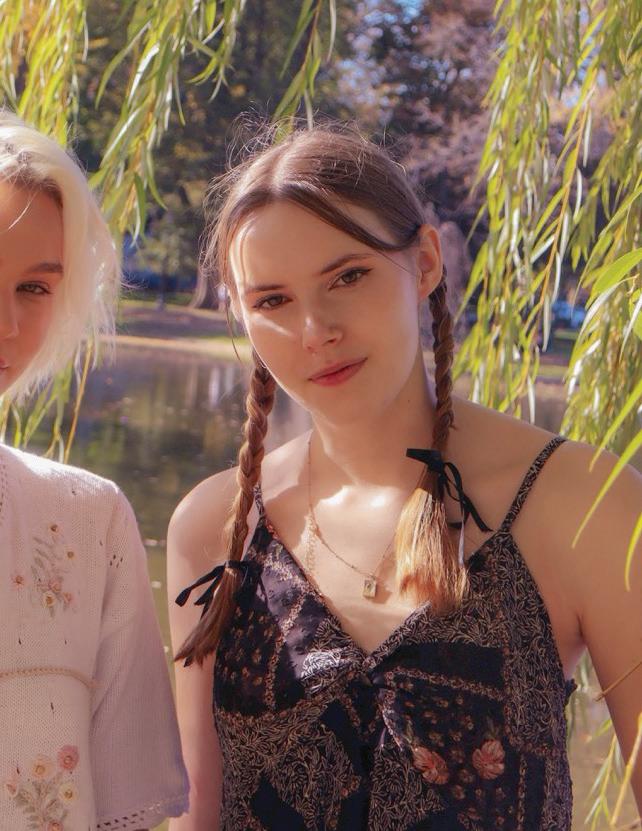
Time Slips Away




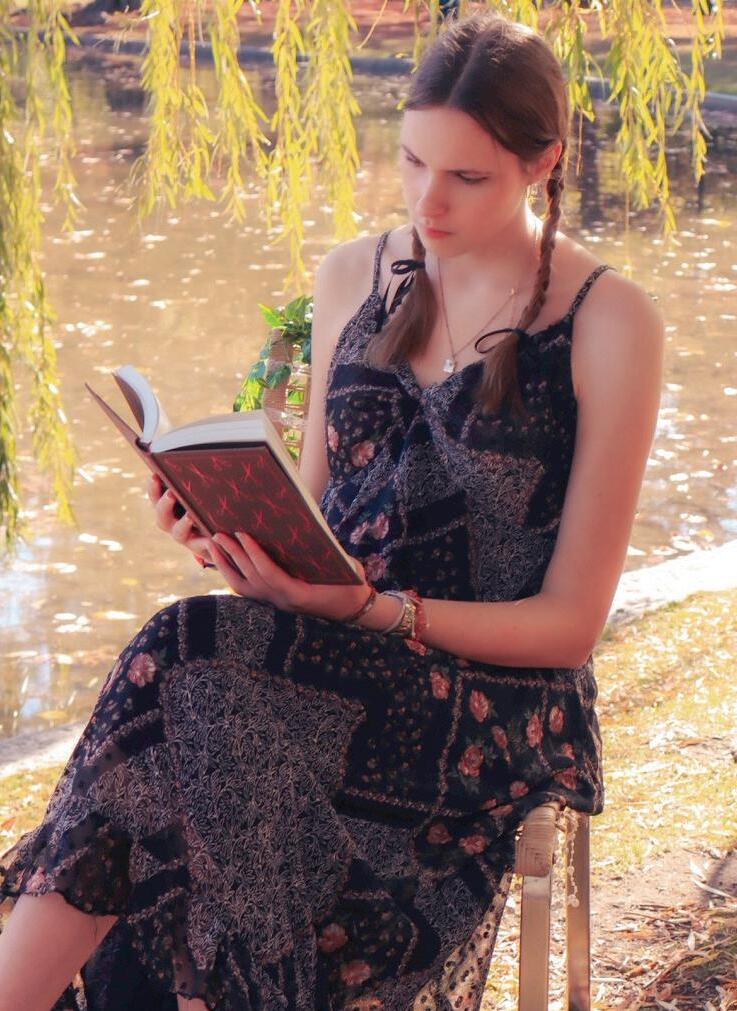




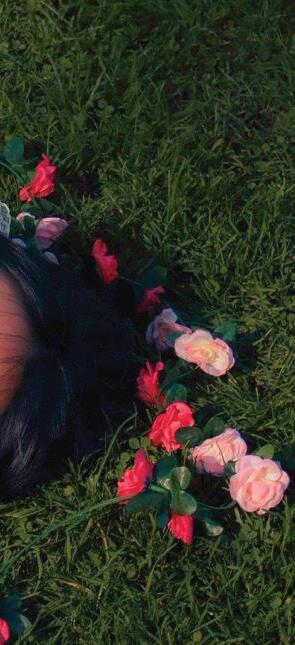








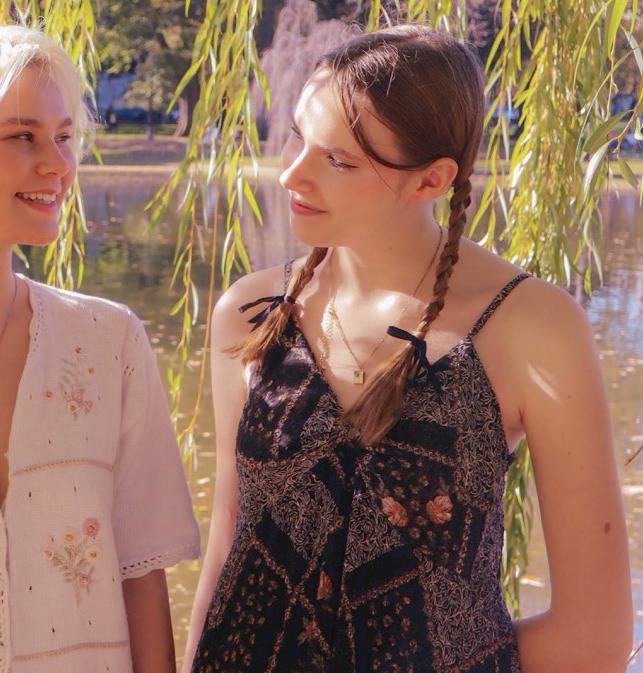



The Fragrantica Fiends
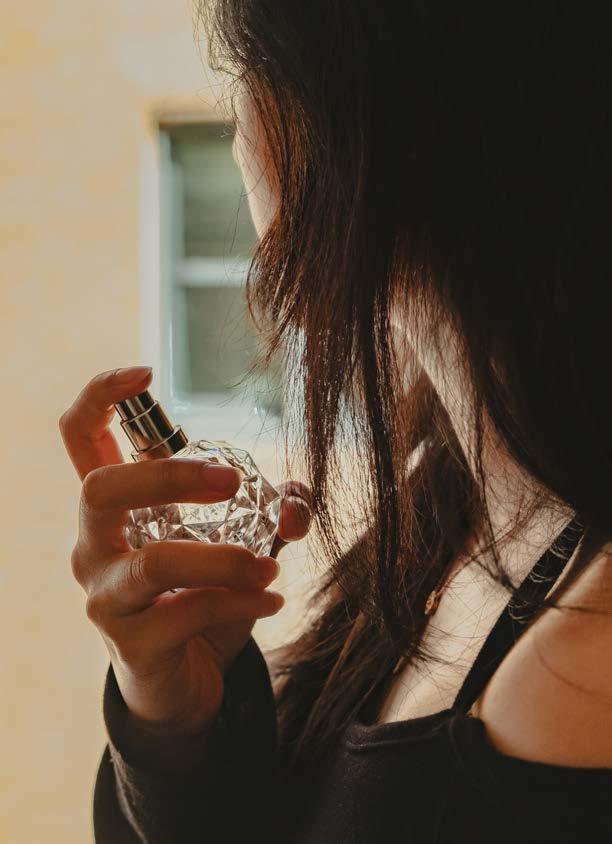



WRITTEN BY ALYSSA CHANG
Ihave a Pavlovian reaction to L’Eau D’Issey. It was my ex’s favorite (and only) fragrance, and it’s like I’m transported back into his white-curtained bedroom whenever I get a whiff of it on the street.
Smell is actually directly connected to the amygdala and hippocampus, the parts of the brain that control your emotions and memories. The smell of fertilizer in the Boston Public Garden reminds me of the exhausted happiness that came with sunny days on my grandparents’ cattle farm. Salt is my only way back to a laughterbreathless day at the beach with friends I fell out with years ago.
I’ve given perfumes away because I associate them with people I don’t want to be reminded of anymore. I’ve kept an empty bottle because I want to remember the person who gifted it to me forever.
Like literature, scent is interpreted differently for everyone, crystallizing into a bottled memory that you can return to time and time again. To me, talking about perfumes is the olfactory version of analyzing a text. It’s my deeply-held belief that perfume is both personal and powerful. But, I wouldn’t have thought so many people agreed—until recently.
The isolating effects of 2020 led to a boom in online perfume discussions. Soon enough, those conversations formed communities. Without the in-store experience available, users flocked to niche messaging boards, like Fragrantica and Basenotes, alongside more mainstream groups like Twitter, TikTok, and Reddit.
Users banded together to make scent translatable to online spaces, and, to an extent, they’ve succeeded. There’s a new semiotics of perfume that has made identifying your preferences much easier. Moodboards and easily understandable infographics allow you to identify what vibe you want to give off. Sampling and decant websites save your wallet the pain of a failed blind buy. Most notably, reviews put into perspective a slice of what your life might look like with this perfume.
Much like the art of writing a witty yet insightful Letterboxd review, the consumption and description of perfumes has become a blend of performative taste-curation, literary analysis, and the sensuous experience of scent. Some of my favorite scent descriptions feel more like baffling literary excerpts than perfume reviews. Rook by Rook 2020 was described as being suited for “goat-footed librarians.”
User @crushedmarigolds described Walk the Sea by Kerosene as a “kitten that’s been thoroughly cuddled by a slightly sweaty man with cologne caked into his skin.” A review of Amber Kiso by DS&Durga opens with “lots of bandages and funerary incense… I can see a mummy wearing this” and ends with “I don’t dislike the scent.”
None of these reviews really tell you exactly how the perfume smells, or even if it smells good. There’s no photorealistic description of the notes, no details on compliments from passersby. It’s not about smelling good or being accurate, it’s about smelling like the type of person you want to be.
What these perfume communities are really offering is the alluring idea of being whoever you want. In some ways, it’s a false
PHOTOGRAPHED BY EMILIE DUMAS
promise. Buying Lune Feline by Atelier des Ors won’t make me a winter siren in deep-toned lingerie, and my Sol de Janeiro 71 body spray won’t turn me into a sunkissed beach-dweller fit for an Abercrombie billboard.
But I don’t think that the promise of a transformed identity is what people want from perfume. When I spray perfume on a pulse point, I’m not trying to be someone else. I’m combining scent, skin, and memory to create something that’s uniquely mine.
On a literal level, perfume settles differently on everyone’s skin. It’s something to do with the chemical reaction that I don’t quite understand. In a similar vein, I think scent blends differently with each person’s life. Thousands, maybe millions of people own Baccarat Rouge 540 after it went viral, but that red bottle probably means something different to everyone. For one person, it might be the fragrance they pull out for every first date. For another, it may bring back memories of an end-of-year hug from a favorite teacher.
People wear perfume for so many different reasons: to comfort, to impress, to seduce. I wear perfume because it’s magic; I’m changing the molecules in the air around me. Smell is chemistry, sure, but more than that—it’s alchemy. YM


Too Pretty For a Job, or Too Pretty For That Shirt?
WRITTEN BY KAT BOSKOVIC
Too pretty for a job.” “I put the hot in psychotic.” “My iron level is lower than my standards.” These baby tees, adorned with ironic, often sarcastic phrases, have resurfaced with the Y2K revival, casting an odd shadow of humor over fashion. On one hand, they serve as subversive fashion statements supposedly intended to empower. On the other, they’re a stark reflection of how fast fashion uses self-deprecation, particularly aimed at women, to commodify identity. Are these tees truly empowering, or do they slander and belittle the very people they mean to humorously celebrate?
PHOTOGRAPHED
BY
EMILIE DUMAS

The appeal of these ironic baby tees taps into a larger trend of “everyday excess,” where fashion brands pull inspiration from mundane, sometimes absurd places—like supermarket aesthetics. As The Guardian notes, fashion’s fixation with ordinary consumer experiences reflects a growing appetite for accessible, playful products that are ironically luxurious or tongue-in-cheek. Baby tees, emblazoned with phrases that teeter on the brink between self-deprecating and empowering, offer a similar kind of excess, allowing consumers to embody a rebellious persona with minimal effort and investment, all while feeding into the thrill of fast consumption. But this humor-infused accessibility often has a darker side, blurring the line between personal expression and self-objectification; after all, what demographic are these baby tees advertised to? Women.
Last spring, courtesy of a close friend, I became the proud owner of my very own baby tee. I had jokingly posted a screenshot of a shirt I had seen on TikTok onto my private Snapchat story, for the phrase it sported frighteningly represented my personality exactly, and as a joke, my friend gifted it to me as my high school graduation present. While I did find it hysterical upon reception, I now look at the neglected item hanging in my closet and wonder, “Where could I possibly wear this?” Much to my dismay, I am not a walking Pinterest board who can just pull a snarky baby tee on, pair it with jorts and sambas, and parade around town. Unfortunately, I have shame, and a shirt that simultaneously defies societal expectations and also draws objectifying attention is not something I can muster up the courage to flaunt in public. I may find the words empowering in theory, but in practice, shame and the difficulty of shrugging off judgment keep me from donning it anywhere but in my room.
Unshockingly, this is not a rare sentiment among other women who own these shirts. In an interview with Vogue, Paulina Rosil, a fashion student who runs a baby tee shop on Depop, states that many of her celebrity and influencer clients have dismayingly informed her, “I just can’t post it because of the audience.” Charli D’Amelio, for example, was willing to post a photo on social media of an “I <3
me” shirt from the boutique, yet the “Attention Whore” tee she had also purchased from the shop never saw the Internet. As a TikTok influencer with a large audience of easily impressionable young girls, her choice may have been the right one. It’s arguable that an “I <3 me” tee promotes self-love and confidence, a department in which much of her tweenage/adolescent audience may be lacking in, but an “Attention Whore” tee has no other justification except self-deprecation. To post such a shirt online is public humiliation, for degrading yourself because of a fleeting fast-fashion trend can’t be described as anything else. That’s precisely the issue with the rise of baby tees: we purchase them without thinking, either for ourselves or as gag gifts, because they emblaze a sarcastic slogan, but they’re only worn once or twice before they find their way to a dump. With designs meant to make bold statements, yet crafted cheaply for short-term wear, they tap into the very paradox of fast fashion we should aim to dismantle. According to the World Economic Forum, approximately 85 percent of all textiles find themselves in landfills annually, and the constant churning and regurgitating of trends only contributes to this mass consumption. As of 2014, we buy 60 percent more clothes than we did at the turn of the 21st century, no doubt due to the rise of social media. As soon as a trend comes into style, it is immediately replaced by something else, for these trends are immediately accessible and don’t rely on a trickle-down from high luxury runways. Baby tees are no exception to this; the revival of Y2K fashion has prioritized mass production over sustainable material, and my own baby tee may very well end up in a landfill once I accept I can never fathom wearing it in public. Many thrift stores don’t accept such vulgar clothing, and recycling options for these garments remain limited—either reused in lesser-quality garments, or tossed out entirely. Are jarring, borderline degrading gag gifts a justifiable reason to destroy our planet?
Ultimately, the Y2K baby tee trend is both a fashion statement and a social commentary—a symbol of fast fashion’s ephemeral allure as well as its contribution to a culture of self-satire, often belittling to its wearers. By constantly cycling through trends that capitalize on irony and self-deprecation, the fashion industry markets these tees as empowering tools for self-expression while perpetuating a culture that encourages disposability. Whether they provide true empowerment or simply make us the butt of our own joke, baby tees are here to remind us that fashion, like humor, can come at a high cost to both our identity and the environment. These tees may be cute and may be flooding our social media feeds, but shouldn’t we stop and ponder before we buy? YM

A Quest for Androgynous Style
WRITTEN BY GRIFFIN WILLNER
When I was in middle school, I had shoulder length hair. My light brown locks dangled in waves behind my ears and draped down my neck. It tickled the collar of my T-shirts that read “Let’s Get Weird” and “Angry Birds for Life,” as if to say, “I’m only ten and I’ve already defied the constraints of the gender binary.” Still, my hair remained the topic of attention whenever I attempted to make friends with my male peers. Often, new faces would mistake me for a little girl, or my classmates would question why I, a boy, could possibly look like a little girl. Other than my hair, I presented in a masculine way, or as masculine as a little boy can be without being socially isolated. Despite the ridicule, I loved my hair. I loved brushing it for unusual amounts of time. I loved that my mother thought I looked like a prepubescent Deadhead. If it had not been for my fears about being a social pariah after coming out as gay in 8th grade, and if I had not over corrected by cutting my hair, I wonder how much I would have allowed my gender expression to develop.
While I cannot say I love every Emerson College policy, I have always praised the community that has been bred. The students lining Boylston Street are never afraid to experiment



PHOTOGRAPHED BY ALEKS CARNEY
with their style, or with their gender expression. Peers climb up the treacherous Walker building stairs in heels and long gowns alongside students wearing cargo pants matched with blouses. Men, women, and gender nonconforming students alike have the ability to wear whatever they want, and I have never been so inspired. Amidst this wave of experimentation, I have allowed myself to dip my toe into the gender fluid.
My sophomore year, I started using “he/they” pronouns; I did not make any formal announcement, nor did I replace my entire closet. Instead, I got tiny gold earrings and told myself that I would keep an open mind to new clothing items. Not much changed until I attended a gala where I finally wore a friend’s loose, black skirt. It flowed around my legs freely like the waves that once sprouted atop my head. In addition, I wore a white floral top, fancy fall boots called The Jack in Eden by Taft, a maroon knit blazer, and a gold necklace with a pearl on the end. It was possibly the most genderless outfit I had ever worn in public.
After the event, I felt a sense of unease. Men passed in groups, pointing and laughing at me like I knew they would. I escaped to my friend’s apartment where she was having a costume party. I thought about changing into something less taboo, perhaps a costume for the party, but I caught my gaze in the mirror. I looked at how the skirt hugged my waist uncomfortably, and how my nipples were showing. I pictured the bullies from my memories and the men who had just laughed at me, my chest burning like the fires of Hell, and I closed my eyes.
“I’m wearing this,” I told my friend.
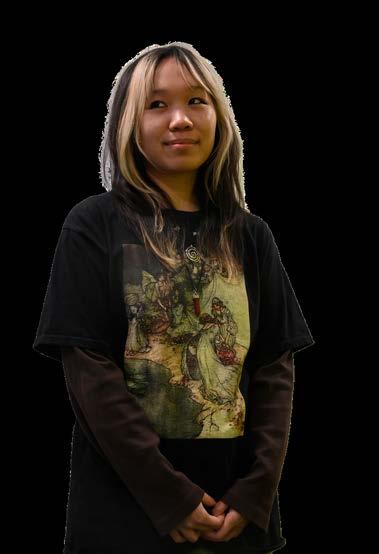
Sometimes, it feels like I do not fit into any gender boxes. It is as if I was treated like “the gay” for so long, a part of the girls but also not quite a woman, that I was socially castrated or unsexed by my own queerness. I feel a resentment toward the masculinity that tormented me, and I feel shame toward my inner femininity. Seeing pictures of my hair before 8th grade, or of my recent more genderqueer look, brings boiling traumas to the forefront of my stomach. Yet, I remember moments from the gala. I am standing in front of a stage doing turns in my skirt and blazer, and the room fades away as I am absorbed by my silks. I loved my long hair, I love my skirt, and I am tired of fighting with a brain and a society preprogrammed to enact gendered fashion. Although I have not figured out my identity entirely, I am committed to pushing my style to its limits. I envision a world in which all of us can surf through various clothing sections. I cannot say I know exactly how an outfit can be androgynous, but I do know that whether we are cisgender, nonbinary, or transgender, all of us should be able to dress how we want without fear. YM







YOUR CLOSET
YOUR CLOSET
INTERVIEWED BY ELLA MORDARSKI
Tanvi (she/her)







PHOTOGRAPHED BY HAILEY KROLL
Where do you typically get outfit inspiration from?
Literally the street, I get a lot of inspiration from seeing how other people style their clothes. Also a lot of Pinterest.
Celebrity/style icon?
Emma Chamberlain but style icon: CARRIE BRADSHAW.
What song would you use to narrate your style? "Pop Star" by Coco & Clair Clair. It just gives baddie. Three favorite accessories to add to an outfit?
My yellow belt, my brown sunglasses, and ALL my jewelry. I’m a mixed metal girl, I love love love collecting jewelry.
What is your favorite color to wear? Why?
Black. I love a pair of long black boots, a fun black tank, chic black sunglasses, a good black mini skirt, the list goes on and on. It's such a versatile, timeless color to style.






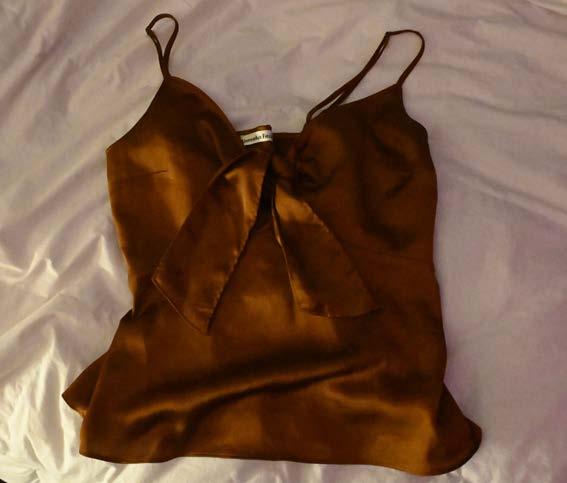



YOUR CLOSET YOUR CLOSET
INTERVIEWED BY ELLA MORDARSKI
Natalia (She/her)



PHOTOGRAPHED BY HAILEY KROLL
How would you describe your personal style in three words?
Playful, versatile, and creative. Where do you typically get outfit inspiration from? For me, outfit inspiration comes from literally anywhere. People I pass on the street, Instagram, magazines new and old, colors I’m fond of. Sometimes it’s a mood or a feeling I want to express, or influence from a particular character, song, or book I’m currently on. It’s all about being free to play around and have fun with my fashion.
What are three pieces in your wardrobe you can't live without?
My favorite blue jeans, leather boots, and a good fitted long-sleeve for layering.
A unique story about a piece of clothing in your closet?
One time I skateboarded halfway across NYC because I accidentally forgot a hat I had just thrifted at a park, so naturally I HAD to rush to get it back before the last train home.
Three favorite accessories to add to an outfit? This is a hard one; A purse, a hairstyle, or complimentary jewelry.












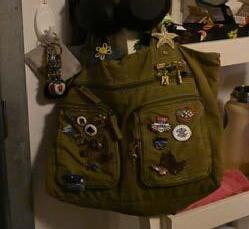






DIRECTED BY ETHAN CALLAHAN
PHOTOGRAPHED BY ETHAN CALLAHAN
STYLED BY ANNA BACAL PETERSON AND JULIA MAGDZIAK
MAKEUP BY NIKO RINCON
MODELED BY CONOR O. LONG AND IZZI SHAFFER
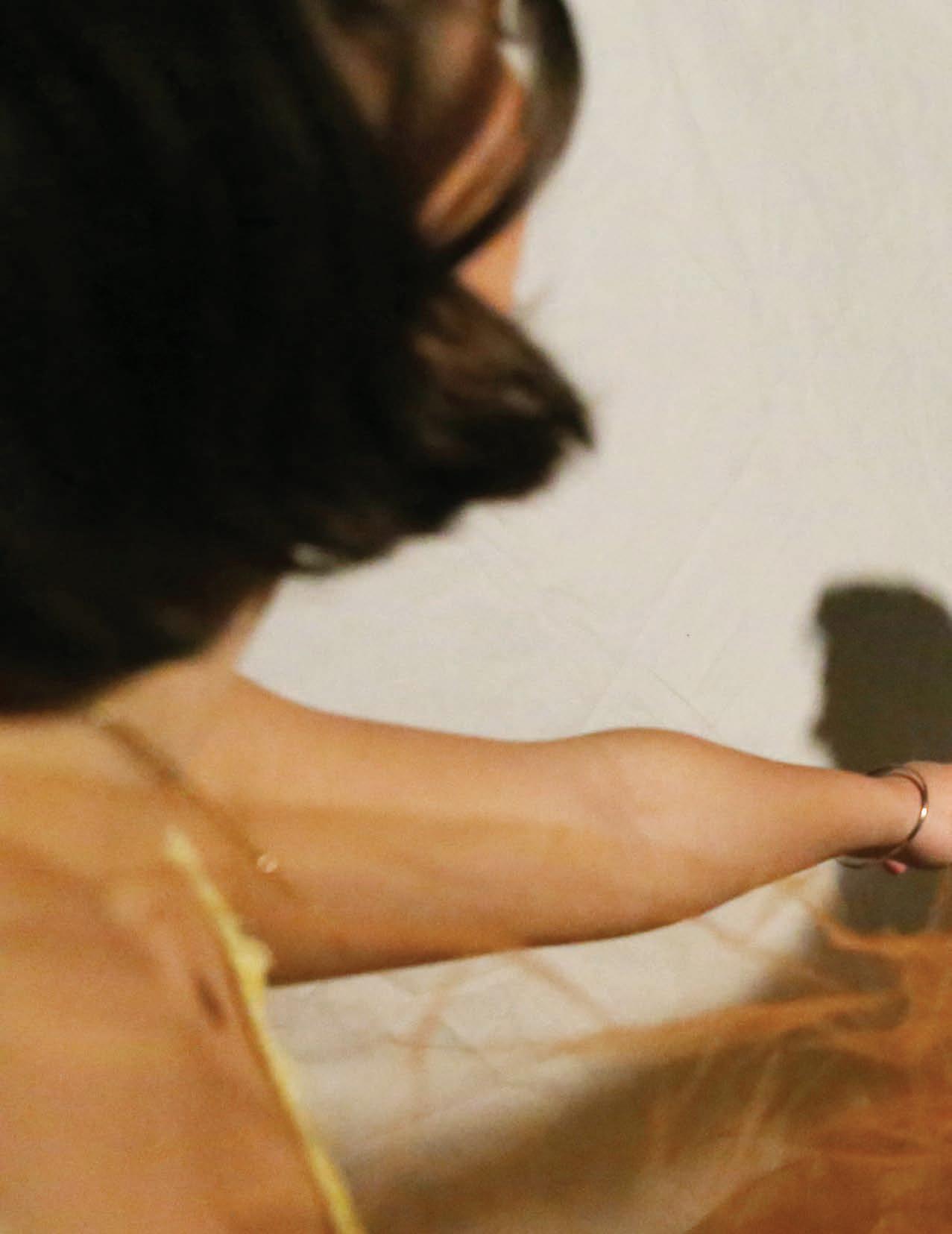
"MELTED WINGS" IS A PIECE THAT EMBODIES THE REGRET OF SOMETHING YOU ONCE HAD. THE ABILITY TO FLY IS FULL OF FREEDOM, BUT NOTHING IS MORE LIMITING THAN WHEN IT IS TAKEN AWAY. THIS EDITORIAL BRINGS OUT THE EMOTIONS OF A BIRD WITH CLIPPED WINGS, AND IS INSPIRED BY THE MYTH OF ICARUS WHERE A YOUNG BOY IGNORES WARNINGS AND FLIES TOO CLOSE TO THE SUN, MELTING HIS BEAUTIFUL WAX WINGS. AFTER PLUMMETING TO THE GROUND, THE BEING WITH WINGS BUT NO ABILITY TO FLY RESENTS THE SUN FOR THEIR MISFORTUNE, BUT THE SUN REMAINS AT A HIGHER PLACE, UNMOVED BY THE SMALL BEING BELOW THAT YEARNS TO BE ON THE SAME LEVEL.











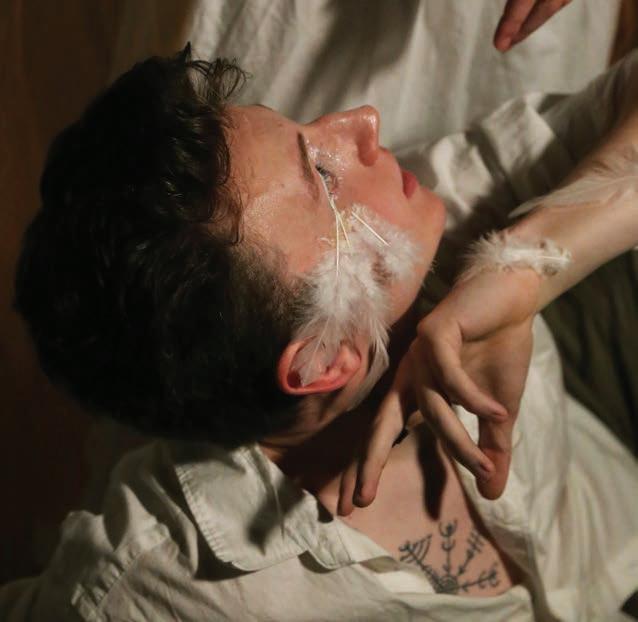








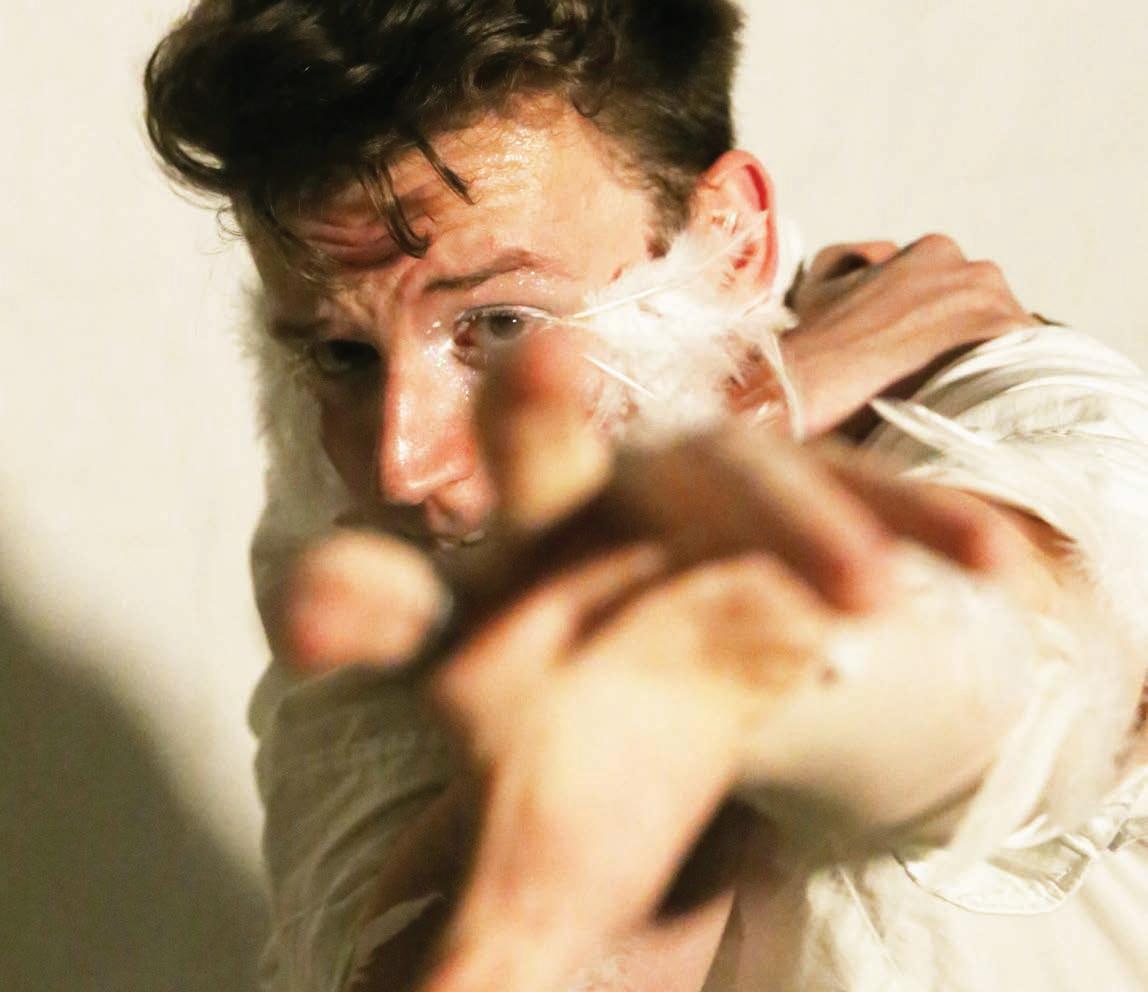








BANANAS BANANBANANAS

WRITTEN BY ISABELLA CASTELO
TPHOTOGRAPHED BY HAILEY
KROLL
"Bananas,bananas,bananas.”
here’s nothing sad about that. The name of the most comical fruit: A telephone, a cartoon slipping hazard, an erection substitute.
“Bananas, bananas, bananas.”
I repeat this mantra to myself as the taste of blood fills my mouth. I bite my tongue and conjure the image of the bright yellow phallus trying to still my quivering lip and dry my eyes.
I’m a sensitive person. The smallest thing can break my heart. If I let myself, I’ll cry for hours. But somehow, along the way, I’ve created a hard, emotionless persona for myself. After 20 years, there’s no going back, so I gnaw on my tongue and think about bananas
When I learned my brother attempted suicide at the same time as an entire church congregation, I thought about bananas. I sat in the back pew, listening to his testimony, not recognizing him or his story. We share a birthday and half our DNA, but secrets, emotions, and near death experiences are off limits. Bananas, bananas, bananas.
When I visit my grandmother, who doesn’t know my name anymore, I think about bananas. I pet her starving cat and sit next to her like a stranger on the subway. Neither of us know why we’re forced to do this anymore. Bananas, bananas, bananas
When my dad told me he had pancreatic cancer I thought about bananas. I just got back from studying abroad and he waited four months to tell me so I didn’t worry. He asked if I was okay and all I did was nod and shrug my shoulders. Bananas, bananas, bananas
Bananas. I need them. The image is always ready in the back of my mind in case of a sudden death, or my dad calls Uncle Louis a bum. I can never break, never let anyone know I’m hiding something soft, and mushy inside me.
The last time I cried in front of my family was at my great grandma’s funeral. I sobbed so much I had to be escorted outside. I was eight. I didn’t know much about death, but I knew I would never see her again or eat her spinach ravioli. They chided me, giggled at me for my vulnerability. It’s been 12 years since I let myself be that brave.
Since then, “Sassy” shot herself, Adam was kicked out of the family for being gay, TJ went crazy on meth then married a Jesus freak, Aunt Laurie stopped talking to me because I made fun of her Samsung, my grandma’s home nurse crashed her car through her house, I was almost an only child—probably more than once.
All this, and no tears. No tears means no sadness. I keep them locked away, in a compartment in the back of my throat. They beg to be released, but I bite them back and feed them bananas. At eight years old, I swore they’d never laugh at me again, 12 years later and they all think I hate them because of how little I let them know. They don’t remember my tears at eight, so they won’t get them at 20.
People ask about my childhood and family and whether we’re close. All I can say is not much happened, nothing exciting. Things could be worse, so if I didn’t cry, why mention it? If people started asking how many times I thought about bananas growing up, the list would never end. I’d ramble about the aunts and cousins whose ages and faces I no longer remember. They’d hear stories of when we laughed together and when they knew me, when I felt comfortable to give them my childish worries in return for back scratches.
I’d talk about them, and slowly my mouth would taste like iron and my mind would go blank except for one thing—bananas, bananas, bananas YM
Breaking Out of the Box
WRITTEN BY LAUREN MALLETT
If my ninth-grade self could see me now, she’d be rolling her eyes, utterly confused, asking one question: why do I not look gay?
In the past few years, I’ve given up on labeling myself as anything more specific than queer, because there doesn’t seem to be any term that encompasses my identity in a more efficient way. Sure, I could say I’m bisexual, and that would be accurate from a definition standpoint—I am attracted to people of any and all gender identities and expressions—but the label doesn’t feel right. It’s like a shirt that’s too small on my chest but awkwardly hangs off my shoulders. For years, my pronouns have been a puzzle, and despite publicly using she/they the past few years, that doesn’t always feel right. I haven’t found a suitable label to stick on. So rather than spiraling over little words to make other people more comfortable with my identity, I’ve simply decided that I am me, and I am queer all over. I don’t want to settle for a label that doesn’t feel authentically me, just to get stuck in a box, feeling like I have no space to explore.
Refusing a label works for me, but that isn’t enough in the eyes of some people.
When I was in high school, I wore my sexuality on my sleeve. I unabashedly had bright red hair, giant winged eyeliner, and wore massive platform boots at 8 o’clock on a Monday morning. Now, it’s a miracle if I can get myself to put my contacts in instead of throwing on my crooked glasses.
So I wonder: has my laziness left me looking straight?
I know style and physical appearance aren’t all-encompassing facets of queerness, because my identity goes so much further than that. However, it can be disheartening to feel unwelcome in your own community, to feel invisible and unnoticed, purely because you aren’t fulfilling the stereotypes or expectations of people who identify the way that you do.
As I've grown more comfortable with my own identity, I feel disconnected from the queer community, almost ousted. I feel invalidated, like my queerness is somehow not enough, that by having become comfortable, I have given up. My own community feels like a room full of strangers when it used to feel like coming home.
Since beginning college, I’ve allowed myself the space to explore my identity in regards to gender, something that I shoved deep in a box in high school, hidden away to collect dust. It was enough for me to like girls, I didn’t have the capacity to unpack why I didn’t always feel like one. In coming to terms with being kinda-sorta-not-really-cis, I’ve felt a pressure from those around me, an implicit demand for proof. My word is not enough, I have
to be the visual representation of what my pronouns look like, of someone who pairs gender with queer and disregards the binary. But on a lot of days, I don’t have the energy to live up to those expectations. I am often hyper aware of my appearance, and even one tiny flaw will plant seeds of discomfort about an outfit, and, by association, my body.
Why must I choose between my comfort and my visibility? On days where I feel comfortable in my body, where I choose to present more feminine, my identity vanishes from sight. I am only visible when I shroud my body in baggy clothes, mimicking a masculine silhouette, or raise myself high off the ground in giant platforms and intense eye makeup. My default form, my ready-infive-minutes appearance, is not accepted as an adequate portrayal of queerness. Instead, I must reach to meet the high standards of presentation. I must try harder, I must perform
Being queer in a predominantly cishet high school wasn’t always easy, but for whatever reason I think I felt more confident. I was leading by my own example, making my own rules, and so I didn’t feel as though I had some arbitrary framework to contort myself into. But at a school where queerness is the norm, suddenly that framework is tighter. The roles of identity constrict like ropes around my wrists, and I am pulled in multiple directions at once. Do I lean into what is expected of me and enhance my queerness, perform a role to fit into what people want me to be, or do I attempt to stay authentic and drift from the community I cherish so dearly?
And so when the “they” in my pronouns goes overlooked and ignored, when my identity is erased because I don’t fit into a neat little box, when I feel invisible in a room of my peers, I ask myself, what’s the point? Why do I bother to repeat myself when I am not taken seriously unless I perform this caricatured version of my queerness, complete with a label and a cherry on top?
The answer?
The light that sparks in my chest every time my boyfriend refers to me as “they.”
The subtle but intimate connection when you discover someone else uses your same pronouns in their Emerson introduction.
And yes, the euphoria of when you put on an outfit and think to yourself, man, I look so gay right now
So, as I walk down Boylston Street, questioning whether my peers see me for who I truly am, I realize that it’s enough to just be me, that I don’t have to force some label on myself to appease others. I’m just one girl-adjacent person trying to make it through the day, breaking out of any box that people try to put me in. YM
ART BY ALEKS CARNEY


WRITTEN BY ELLA MORDARSKI
As a child I assumed the president was a woman— it never even occurred to me that a man would be capable of doing the job. In my little fiveyear-old brain, it was women’s work.
On the brink of the 2008 election, I had to be told the leader of our country was a man.
After I had the hard truth broken to me, I thought I could go back to playing with my dream house. Then, all of a sudden, the second bomb was dropped: “Actually, we’ve never had a female president.” I remember being shown photos of former presidents, not being able to tell the difference. They all looked the same to me. Middle aged white man after middle aged white man. I was extremely confused because, according to the shelves of Target, Barbie was the president-elect. This had to mean the actual leader must be female, right?
Barbie first began campaigning for president during the 1992 election, and while she sat out the '96 election, has continued to run for the coveted job every four years since. It feels natural Barbie would be a multiyear presidential-elect, her resume is stacked to the brim with impressive achievements and unique careers. From being an astronaut, to winning an Olympic gold medal, Barbie has continuously crushed the glass ceiling. Mattel, Barbie's parent company, even teamed up with The White House Project for many of her campaigns. While the non-profit is now defunct, it aimed at increasing female representation in politics.
I vividly remember seeing the 2008 presidential Barbie in stores. Her fun navy and silver striped pantsuit sparkled in the fluorescent lights. Maybe I just really liked her outfit at the time, but she made a lasting impression on me. I truly thought she was the real president. That's the thing about Barbie, she is more than just a toy.
I loved my Barbie dolls growing up. Compared to the other dolls in my playroom, they were akin to the cool 5th grade girls at school. They got to wear whatever they wanted, shine their lips with gloss, and have cool accessories like a pink sparkly flip phone. I didn’t just like playing with them, I wanted to be them.
There is a misconception by adults, that when children play pretend, it’s trivial and confined to narratives set by society. In actuality, a child's playtime

ART BY ELLA MORDARSKI
can be compared to that of a major television production, filled with interesting storylines, complex characters, and drama galore.
When I was a child, I sure as hell never just played mom. While I had a Ken at one point, his head kept falling off (typical man), so I just threw him out and played with only female dolls. Often, I was replicating what I was seeing in the real world. The amount of times my Barbie got a divorce should clearly tell you my parents are no longer together in real life.
This concept of play both replicating and becoming reality is why Mattel developed the slogan “You can be anything.” Barbie is a personification of real girls growing up in a society that often teaches them you can’t be anything. This is exactly what her creator, Ruth Handler, wanted when developing Barbie. As a mother of a young daughter, Handler specifically set out to develop a doll with the hope of inspiring girls to play out scenarios other than mother or wife.
However, President Barbie was, and still is, just that: a scenario. Little did I know my revelation of the president's gender would be only the first time I would be introduced to society's misogynistic view towards women. One day you're five learning the president isn’t a woman, and next thing you know it's been 15 years and you’re a first-time voter watching the election get called for yet another man. The irony is not lost upon me that I, as a 21-year-old, have less rights than I did at five when I was playing with Barbies.
While it's discouraging that once again America has chosen a man over a woman, we must continue to fight for representation. I’ll be honest, the days following the 2024 election were pretty dark. I felt immensely hopeless and angry. While it feels disparaging, you and I both must find something to keep us going. For me personally, I think back to that little girl who wholeheartedly believed the president was a woman. Barbie was my representation that “You can be anything,” and while that was great, I want to keep fighting so that little girls in the future have an actual female president to look up to. Just like Barbie, women will never stop campaigning for a female president. YM
DIRECTED BY LAUREN MALLETT
PHOTOGRAPHED BY LAUREN MALLETT
STYLED BY ANNA BACAL PETERSON AND JULIA MAGDZIAK
MAKEUP BY SOFIA MISISCO AND ISABELLE GALGANO
MODELED BY CALLIE PANG MAYER, KIARA TEIXEIRA, MAH BIJOU CAMARA, MIA DIGIORGIO, OLIVIA BURGESS, ROCIO SOLA PARDO, ZEBULUN BYARUHANGA, AND JASMINE BARRS

BEHIND DOORS
SET IN THE BATHROOM AT A PARTY, “BEHIND CLOSED DOORS” DEPICTS THE INTERNAL STRUGGLES OF RETURNING TO A FAMILIAR PLACE, THE PAIN OF TIME PASSING, AND THE MYSTERY OF WHO WE ARE WHEN WE THINK NOBODY IS WATCHING.
CLOSED DOORS



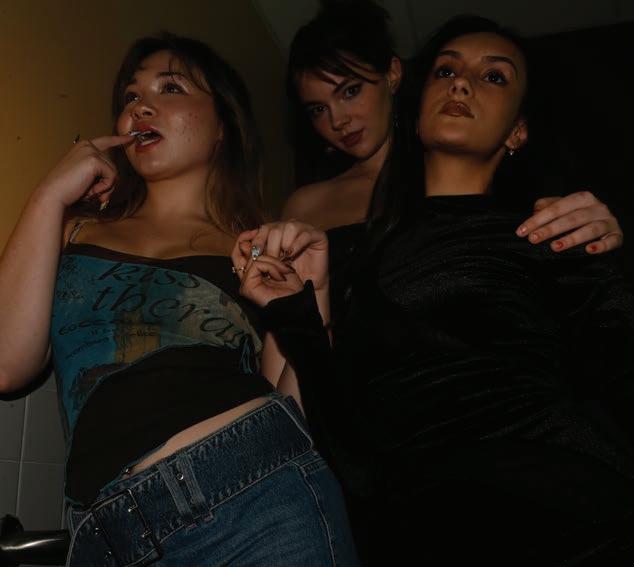














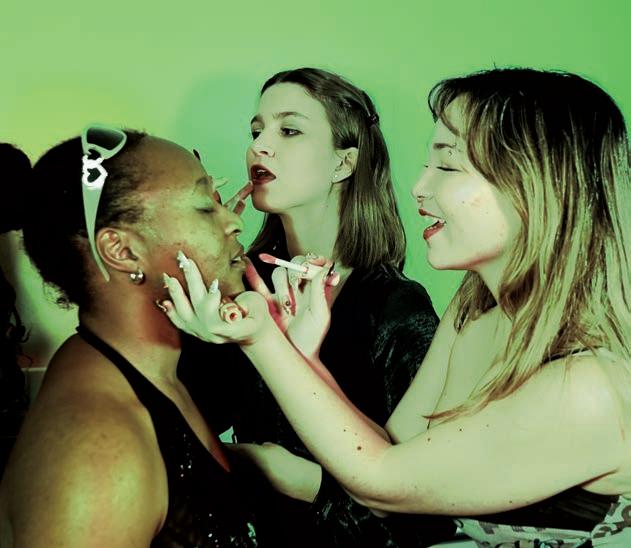


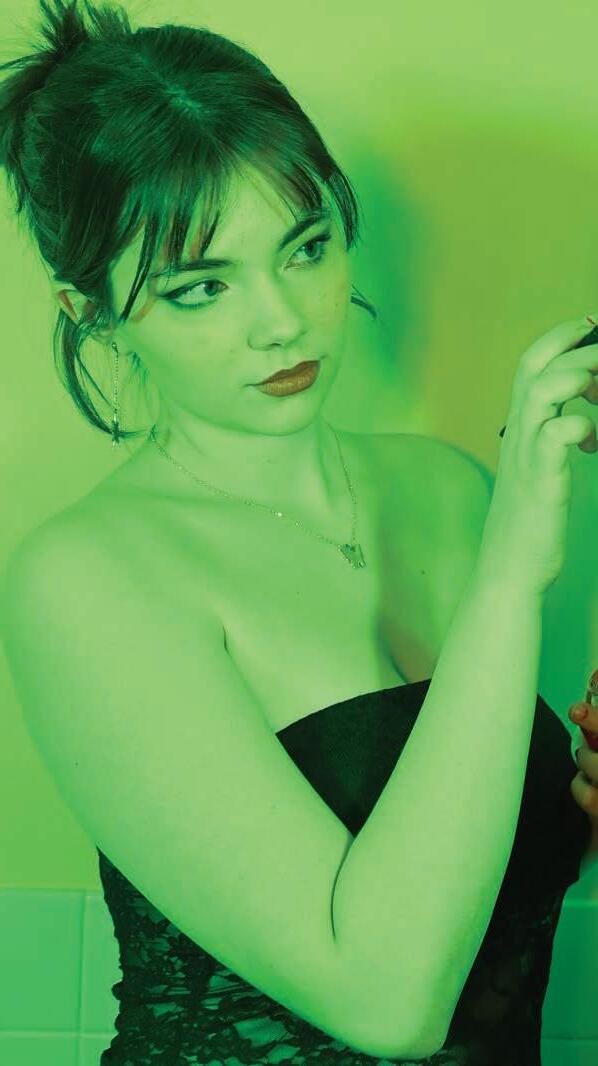




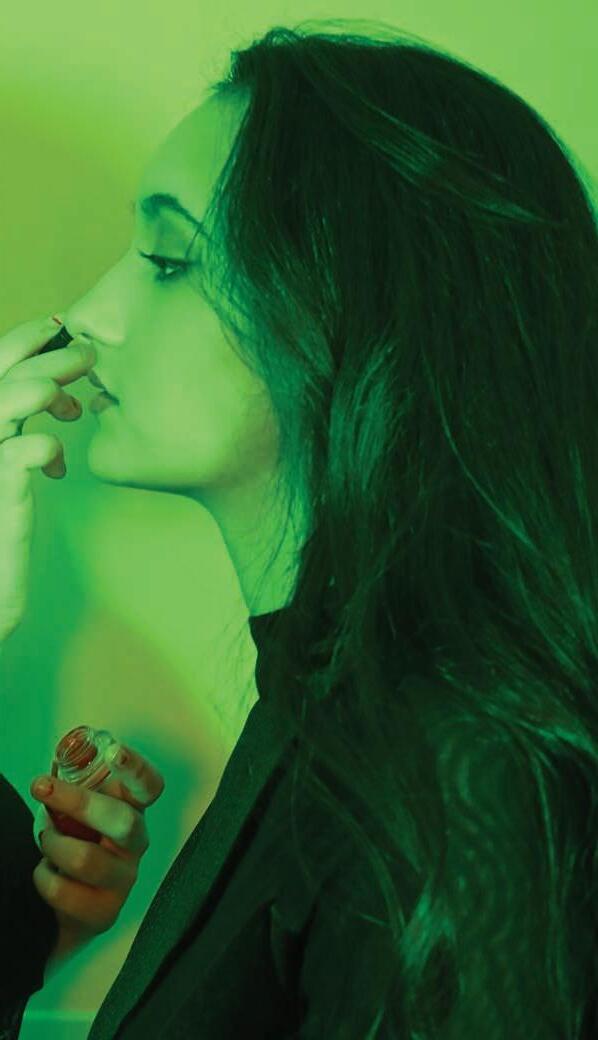









WRITTEN BY ALYSSA CLARK

ART BY LAUREN MALLETT
Ihave been watching reality television since I was a kid. It has been a staple on my family’s living room TV, and I don’t see that changing anytime soon. My mom and I would always watch a variety of shows together like Big Brother or The Voice. As I got older, I started enjoying even more reality shows which led me to where I am now.
On Sept. 6, 2024, I was sitting in my dorm room ready for another show that would allow me to escape my own reality— The Secret Lives of Mormon Wives came out that day and took over the media immediately. Watching this show, I started to wonder why so many people choose to sit and watch other people’s lives, including their best and worst moments. For me, I am not connected to the Mormon Church and was intrigued by the drama revolving around this group of moms. For others, it may just be the latest The Real Housewives show. I also believe people enjoy watching drama unfold that they are disconnected from; it creates anticipation without any consequences for the audience. Speaking from experience, drama between friends can take an emotional and physical toll on a person. It isn’t fun; it’s draining. On the other hand, some people might feel bored when not engaging in conflict. Reality shows allow these individuals to see these experiences without feeling the effects. Shows that involve romantic and platonic relationships could also point towards this. It can bring the audience to feel the highs and lows that the individuals within the show are feeling.
A widely known example of reality TV showcasing romantic and platonic relationships is the most recent season of Love Island USA. While the focus of this show is finding matches, close-knit friendships are also created as a result. Three contestants call themselves PPG (Leah, Serena, and JaNa), and this is how the audience comes to know them. They often are still together, posting on social media while hanging out. Not only does drama between friends bring engagement, but so does the connection between individuals. People often not only long to witness drama, but true friendships. Even for me, I remember more of the platonic relationships that are created from this
show since it resonated with me above all else.
With drama in mind, I need to dive into The Real Housewives franchise. It started with The Real Housewives of Orange County in 2006, and has led to newer branches like The Real Housewives of Dubai in 2022. There is an extensive list of cities that are featured in this set of shows and it has been dominant in many people’s lives. They want to see drama unfold between the women, especially when it comes to the reunion. Notably, the Season 4 reunion of The Real Housewives of Salt Lake City is where secrets are revealed revolving around an Instagram page that was dedicated to exposing one of the cast members, Jen Shah. This is just one of the many reveals that come from these shows. Many people, including my mom, tuned in for this reunion for everything to be revealed. People are drawn in by these “scandals” and the dramatic fashion of it being exposed contributes to the increasing audience.
The rise of reality television can depict drama between coworkers in shows like Below Deck and Vanderpump Rules. The audience sees tensions rise in a workplace environment, then watches romantic relationships form, which further stirs drama. The plurality of shows and relationships keeps audiences interested and wondering what could occur in places like this. It can also be extremely relatable for individuals since these environments can create more extensive emotions.
There seems to be a common idea that reality television just simply isn’t good, and many people don't understand why someone would want to watch these shows. Multiple people have come to me to tell me this, yet I struggle to understand this idea. Everybody has different opinions and tastes, but there is a humanistic element in reality shows. While they can be scripted, it can feel more real and connected to us as people in our hectic lives. There is a sense of deep emotionality that I don’t always experience within a fully scripted show. This isn’t to say that there aren’t fictional shows that don’t get to me, but reality shows can provide a sense of normalcy in the world we live in.
YM
The Art of the KING ADAPTATION

WRITTEN BY KARENNA UMSCHEID
Stephen King infamously hates Stanley Kubrick’s adaptation of The Shining. For all its glorious horror iconography and immortalized performances, he just cannot shake how inaccurate it is to the novel.
The relationship between King and Kubrick, between The Shining the book and The Shining the film, speaks to the fascinating dichotomy created between King’s stories and their cinematic counterparts. The relationships are complicated, different for each film, with a myriad of factors so complex that it is extremely difficult to determine whether one is simply good or bad. It’s one thing to make a good film, and another to make a good Stephen King adaptation; I am curious about where the intersections of this can be found, and what it says about storytelling methods in books and film. What can a filmmaker do with such rich, detailed prose? Do they need to search for substance?
Allow me to start with the best—The Shawshank Redemption is, to me, an excellent example of how an adaptation can also be an excellent film on its own. The original novella, Rita Hayworth and Shawshank Redemption, tells an exceptional tale about hope and redemption through education, grit, and friendship. Director Frank Darabont transformed King’s excellent dialogue and prose into a film that celebrated the imagination and inspiration of the story, utilizing the best aspects of the work with the best aspects of the cinematic medium. Stand By Me is also a successful and very popular King adaptation that maintains the essence of the story, and is a part of the same novella collection as Shawshank, Different Seasons Director Rob Reiner extracts the most powerful anecdotes, the most memorable scenes from the book and highlights those. He utilizes cinematic capabilities in making a film that captures the essence of King’s story while cutting out some of the less consequential moments.

PHOTOGRAPHED BY LAUREN MALLETT
terrifying as possible—with a chilling, unforgettable performance by Kathy Bates, a jumpy, intense score, and dramatic effects with light and scenery whenever possible. The film still lacks some of the gore, as well as the psychological terror in the protagonist’s mind, but it keeps the essence of the film which still allows for a very successful adaptation. It is an interesting case, being adapted twice—27 years apart, in a keen homage to the lore of the novel—and neither adaptation being exceptionally accurate or successful. It creates a case for the idea that not all of King’s works are meant for the screen. The climax of It spans back and forth between the protagonists as children and adults, fighting Pennywise in his true form as a gigantic spider inside his mind, and performing an indigenous ritual in order to fight him in the Macroverse which was created by Maturin, the turtle that created the universe. The abstract, fantastical nature of the climax of the story makes it extremely difficult to adapt—but the colorful scares and shapeshifting powers also make it enticing to horror filmmakers and audiences. It is the story that walks this delicate line between a King adaptation and film, settles in between being appealing to filmmakers and audiences (even if for just how terrifying Pennywise looks), and being too dense and difficult a story to properly adapt.
It Is the sTory th AT wA lKs thIs DelIc Ate lINe betweeN A KING AdAptAtIoN AN D fIlm, setTles IN betweeN beING ApPe AlING tO fIlmm Akers AN D AuDI eNces.
The Mist, also directed by Frank Darabont, is a fascinating case because he does something really bold—he changes the ending completely to one that is far darker and more devastating than what King has written in his novella. The Mist has mixed reviews, largely for the poor CGI effects, but it still provides a really interesting example of a film adaptation celebrating the effective parts of King’s narrative—in this case, the character tensions and examples of religious extremism— while changing other aspects to make the film more powerful.
Misery is a different, yet fantastic example of a filmmaker using the horror capabilities of filmmaking to enhance the terror already in the story. Rob Reiner (who previously directed Stand By Me) takes the captivating, intense essence of King’s thriller and makes it as filmically
Doctor Sleep posed a fascinating challenge to filmmaker Mike Flanagan, for not only was he adapting a King work, but a sequel to The Shining. Flanagan had to delicately split the difference, to offer an adaptation that is true as a sequel to the original Shining novel, and as a sequel to the film adaptation. Doctor Sleep is imperfect, but it is well-acted and well-made, and it manages to be faithful to its novel counterpart with visual homages to The Shining film that marries what makes both works so enamoring. It honors King’s storytelling by not shying away from grisly details and immersing into his visceral characterization, and uses the timelessness of film visuals to honor the thrills of Kubrick’s film.
The best King adaptations are carefully chosen—often his shorter works, less dense yet still rife with prose and inventive stories—and the most emphatic parts are made even more visceral through the power of film. These examples (and many others not listed) examine the art of adaptation and film through a storyteller both universally lauded and frequently criticized. Yet for any criticism he has received, he remains a central figure in horror storytelling. His works provide a stage for nuance and subjectivity, for creativity that emerges from itself and all the avenues in which his work, even when surface-level or brilliant or obscure, can exemplify the most fascinating elements of cinema and art as a whole. YM
me, myself, and my kindle
WRITTEN BY HAILEY KROLL ART BY ALEKS CARNEY
Growing up, I was in my head. A lot. I was the typical overly independent, shy, and anxious eldest daughter that always had her nose shoved in a book. My safe haven was within the four walls of my local library, surrounded by a myriad of new adventures residing between the pages of a good paperback. Organized so perfectly, each story awaiting my arrival with the plan to rip me from my own reality into their vast worlds.
Somehow along the way, I lost that side of myself. Throwing myself into coursework, I stopped reading almost all together between the ages of 14 and 19. Half a decade of my life without a major part of my identity and mental escape, I’d forgotten just how much books mean to me. That was, until summer 2023 when I stumbled upon a local bookstore I’d never been to in my hometown. Looking for an easy read to accompany me at the beach, naturally, I picked up “Beach Read” by Emily Henry. From then on out, I discovered the wonders of bookstores, now going in one every opportunity I get. Even when thrifting, I end up by the books for longer than one should ever spend in one section. Obsessing over cover design, the smell of the pages, and the ability to choose cute bookmarks, I would never give that up… right?
The answer, I found, is yes. There is a world in which I would trade my paperbacks, and that is for the Kindle. After the boom of “BookTok,” it felt as though everyone and their mother began turning to e-readers for the convenience and cost-effective features. Over the course of a few months, and the help from a multitude of my friends recommending the switch, I gave in. I found myself obsessively searching Kindle reviews online for a week straight before remembering I gifted one to my mom just a year prior. Due to her reading rut, I had
the privilege of borrowing it. Boy, was I skeptical, but I decided to give it a shot anyway.

It’s now six months since that moment, which finally puts me in the position to confidently give an accurate review of my experience. reading on a Kindle. It’s a bit more nuanced than that because I will always have a soft spot for re-reading childhood favorites in the form of a beaten down paperback, annotating new discoveries along the way. Collectors editions will also always have a special place in my heart—and more importantly, my shelf.
As for the Kindle, however, the first thing I noticed is readability. Not only are there various customization features that increase general accessibility, but the electronic ink used in Kindles are easy on the eyes, especially in combination with dark mode and the adjustable color temperature system. I typically need glasses when reading or working on any electronics, but I found that I can often skip my glasses completely when using the device. Together, these features create for the perfect cozy reading experience, as it allows for reading in bed without an extra light, sitting in weird positions to hold the pages open, or uncomfortably laying sideways on my glasses.
The other major factor in my adoration for the Kindle is convenience. As someone newly interested in fantasy novels, the books are so damn big I can barely carry them around in my bag every day. Recently finishing up my first large series on the e-reader, I decided to switch back to print as an experiment. I immediately became frustrated by the sheer inconvenience of carrying around a 600-page novel, which is not the thickest book I’ve read in even this month alone. I will always love print. But for now, at least, it’s me and my Kindle against the world. Her cute little green, hardcover, book-like case, and not my glasses against the world! YM
PHOTOGRAPHED BY HAILEY KROLL


YMP3
kaleidoscope through time
swirl through the age of free spirits. a YMP3 playlist that instantly drifts you to the past age of flower power.
My Life - Billy Joel
Roxanne - The Police
Peace Frog - The Doors
Kaleidoscope - Chappell Roan
Past Life - Tame Impala
Everywhere - Fleetwood Mac
Right Down the Line - Gerry Rafferty
Is This Love - Bob Marley & The Wailers
You Make Loving Fun - Fleetwood Mac
Vincent - Don McLean
Spill The Wine- Eric Burdon, War
You Can’t Always Get What You Want - The Rolling Stones
Future Games - Fleetwood Mac
White Rabbit - Jefferson Airplane
Hotel California - Eagles
White Room - Cream
Dirty Work - Steely Dan
Peace Train - Yusuf / Cat Stevens
Make Your Own Kind Of Music - Cass Elliot
Spooky - Dusty Springfield
Goin’ Back - The Byrds
Incense And Peppermints
- Strawberry Alarm Clock
If 6 Was 9 - Jimi Hendrix
Still Raining, Still Dreaming- Jimi Hendrix
JARASCHATRKAEW
(SHE/HER)

ARTIST STATEMENT WRITER
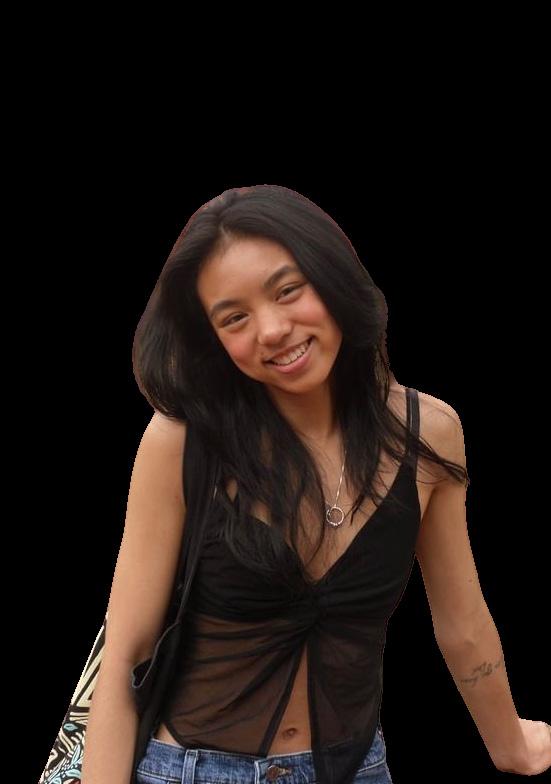
& DIRECTOR
FILM NAME: My Ghost Smells Like Summer
Describe your work in one sentence:
A young woman becomes obsessed with recreating a smell from memory, but as she gets closer to perfecting the scent, the past comes to haunt her in an eerily familiar way.

What inspires you?
It sounds a little bit cliche, but I truly am inspired by the people around me and all the people that I love. There are a lot of pieces in this film that are parts of me and those who are dear to me; the things I’ve loved and lost. This story in particular is about grief but also about memory in general, and how there’s a softness that I feel towards things that have passed and I left to the past.

What do you feel makes this film unique?
What I think makes this film unique is that it’s about how smells in particular haunt us. Because movies are a very visual and auditory based media, it was interesting to try to tell a story about smells, something that we can’t see or hear. It’s also a horror story that has homages to horror, but it’s told through sorrow and missing someone.
What does your creative process look like?
When writing, I really like writing late at night in one sitting, and then editing and correcting things in the morning/during the day. It’s a little bit random, but when I played piano I was told to learn the beginning and the end of pieces because you’ll know those best, and I kind of carry that into how I write things because I force myself to write the beginning and ending before writing the rest of it so that I know where we’ll end up.
What has been your favorite part of the production process for this film? What made it
special?
I loved how tactile this set was in particular, and how the crew was able to be in these smaller, more intimate spaces together. Because I usually do the art team side of things in film and used to do theatre in high school, I really appreciate things that can be held and things that can be carried with us. It made us closer because we filmed on location and got to chat and see each other in these very lived-in spaces. I had fun helping with the candles, they also smelled so nice with all the candles we had, and having so many things we could interact with made the set feel a lot more grounded and real, in a way.
Any favorite memories from the set?
My favorite memories from set were most likely shooting at Carrie Nation, the cocktail club up on Beacon Hill, as well as doing the final scene of the shoot with our actors
Saya and Edison. Filming at the bar was just so, so cool, and we got to go in and see it before it opened and film during their prep hours which I am so, so grateful for. As for the final scene, it was a heavier one and a couple people were brought to tears, myself included. The actors just did such an amazing job bringing it to life, and I had never seen a crew be moved the way we were by a scene that was actively being shot.


What advice would you give to people wanting to start writing/directing for the screen?
The only advice I can think of is to be able to communicate really well, and to be genuine in the way you talk to people about what you would like them to do and why, as well as being really receptive to their thoughts. It’s a lot of moving parts to make this product, and being even a little bit knowledgeable about what you’d like for each part really goes a long way! I have a lot of love for this product and the people who made it, and I think starting with passion and intention really, really makes the movie come to life.
Where do you see yourselves in 10 years?
I would really love to continue writing in some way. I’ve always loved storytelling and I think it was so captivating to watch words come to life in a way I hadn’t before. So, I hope to be writing or be in the writer’s room for various productions!
Anything else you would like to share about your film?
I’d just like to thank everyone for being part of it and all the work that was put into it! Once it’s done, please check it out and I hope you enjoy the film as much as I loved making it. We hope to be done by spring, so stay tuned for our release by following @smellslikesummer.floor13 on Instagram!



